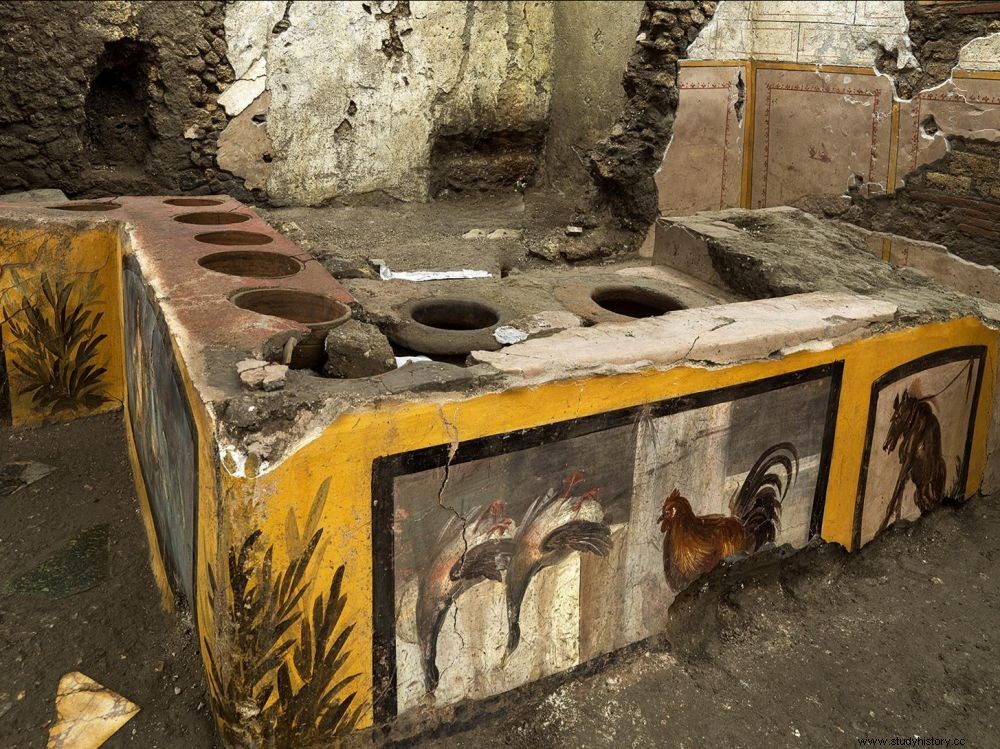A small street food stall called a thermopolium discovered in Pompeii was shown in its entirety on December 26, 2020 by site management. Wonderfully preserved, it already provides valuable information on the food consumed more than two millennia ago in the Roman Empire.

A photo of the thermopolium taken on December 26, 2020.
Looking at it would almost be like traveling back in time as its state of preservation is exceptional. A thermopolium, a small street food stand in ancient Rome that could be similar to our current "fast food" has been unearthed in Pompeii, site officials announced on Saturday, December 26. Adorned with patterns and figures in almost intact colors, the counter, frozen by volcanic ash, was partially exhumed in 2019. Work then began to preserve the entire site as well as possible. This is located in a district that used to be very busy, at the intersection of rue des Noces d'Argent and rue des Balcons.
Precious clues about the diet of the time
If the fresco representing a Nereid on a horse had already been unearthed, researchers have been able to discover during these last months of excavations new masterpieces on the stone walls of this stand, among which a rooster and mallard ducks. These were to be consumed with wine or hot drinks. Scientists have also found in the excavations of the table food reliefs that could provide valuable information on the gastronomic habits in Pompeii at the time of the eruption of Vesuvius in 79 AD.
A fragment of duck bone, but also remains of pork, goat, fish and snails were recovered from the terracotta pots, where several ingredients were cooked together. At the bottom of a jar were found crushed beans, which were used to modify the taste of the wine. "In addition to being a testimony to daily life in Pompeii, the possibilities of analysis of this thermopolium are exceptional, because for the first time an entire environment has been unearthed" , rejoiced Massimo Osanna, director general of the archaeological park of Pompeii, quoted in a press release.
Pompeii alone has 80 thermopolium
Amphoras, a cistern and a fountain, as well as human bones, were discovered nearby, including those of a man in his fifties near a child's bed. The thermopolium (from the Greek "thermos " which means hot, and "pôléô " which means to sell) were very popular in the Roman world. Pompeii alone had 80 of them.
Pompeii is definitely a site in which many treasures remain to be discovered. At the end of November 2020, the discovery of two new victims of the eruption was announced by the management of the site. These are the possible remains of a master and his slave, according to the researchers. These remains were found in a villa in the area of Civita Giuliana , a prestigious property of the Augustan period located about 700 meters northwest of the site. A few days earlier, it was a bottle of olive oil, the oldest ever recorded in the world, which had been unearthed from the collections of the Archaeological Museum of Naples. This is also believed to have come from the site of Pompeii and was buried in the disaster.
It must be said that only a third of the site, which currently covers 44 hectares not far from Naples, has been unearthed by archaeologists.
With AFP
